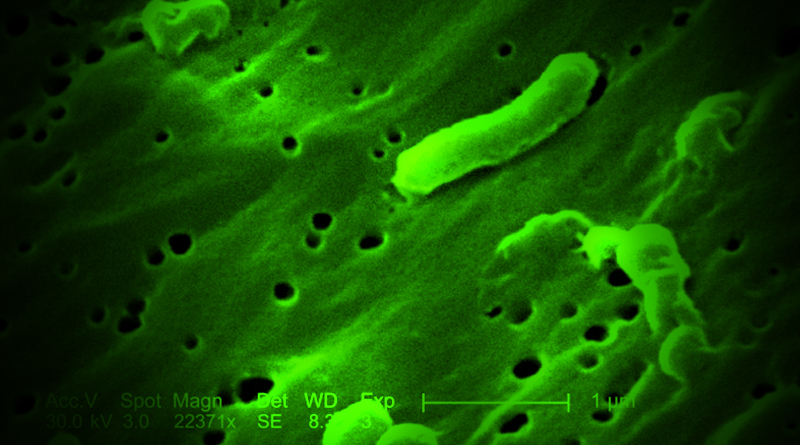A pandemic outbreak of Asiatic cholera swept over most of the world between 1829 and 1851, reaching from India, across Asia and into Europe. By 1832, Dundee had been hit – the pandemic itself still in its infancy. From there the pandemic swept across to the Americas, devastating lives wherever it fell. In Dundee, large numbers of citizens were rapidly falling ill as the disease took hold.
Cholera caused more deaths, more quickly, than any other epidemic disease in the 19th century. Classic cholera symptoms include watery diarrhoea, which leads to dehydration and mineral imbalances. It is spread by contaminated water and food that has been contaminated with human faeces, and humans are the only species of animal susceptible to the disease. Back in Dundee, with no clean water and no real means of sanitation, the situation worsened as people fell gravely ill and died. With such a staggering number of cholera deaths, our gravediggers couldn’t work fast enough to dig burial holes as the bodies began to literally pile up!
It became clear very quickly that there was just not enough time in the day (or night) to keep digging individual holes for people, so work got underway to build a trench along the southern wall of the Howff. This was to be a mass grave for the victims of cholera – people of all sorts, many of them unknown to each other in life, but now destined to lie together in death. Thankfully, they were still allowed to be buried in coffins, so it wasn’t as though the bodies were just flung in the trench unceremoniously! These coffins were all piled up in rows on top of each other until they came close to the surface, and then the trench was filled in.
It was probably a horrible decision for a family to make – burying your loved one in a mass grave – but with no other options available due to limited land and manpower, it was the only way to deal with such a deluge of bodies. The only remaining gravestone which indicates the location of the trench, is that of William Forrest Esquire, a Lieutenant Colonel with the Hon EIC Bengal Army, and inspector of their Militaty Stones in London. Died of Cholera Morbus on 20th July 1832 on the passage from London to Dundee, deeply lamented by his family and friends.
When we were in Dundee University Archives recently, we came across a trio of photographs relating to a vault that had been discovered during the excavation work to build Bell Street car park over the site of the Constitution Burial Ground in December 1972. With it is a memo from the then-Director of Parks to Dr Scott of the University of Dundee, relating specifically to the potential problem of cholera and its continued infectivity. Whilst there was no further correspondence on the matter in the archives, the memo did go on to say that the vault had been filled with dry sand after the photographs were taken to allow the building work to continue.
The images show three adult sized coffins, all lying side by side, barely a foot apart from each other in an open, dark vaulted space with brick walls on the sides that are visible in the photograph. They are covered in mould, bits of earth and some debris, and are severely decaying. The first coffin (in the immediate right of the picture) and the second central coffin both appear to be marginally larger than the third, which is on the left of the overall image. Between the second and third coffins, there appears to be lying a much smaller coffin. It looks like this coffin had initially been laid between the two coffins, perhaps on some kind of elevation, but it has since fallen over, losing its lid slightly in the process. The small coffin, perhaps one eighth the size of the others, sits at a strange angle to the floor, its lid askew (but not enough to reveal its contents).
The first coffin has a series of what appears to be metal riveted edging along the base and on the lid of the coffin – presumably some kind of grave-robbing deterrent, but, due to the decay of the other two coffins, it is hard to tell if they too had some kind of metalwork on them. The same riveted work can be seen on the small coffin. Whilst the vault may have been infilled, we know they are still under the car park, biding their time in their dirt and mould-ridden coffins. Perhaps future building and excavation will uncover them once again, or else we will rebuild over the car park in time, pushing them further into the recesses of forgotten history.
Sources FDCA website www.fdca.org.uk
Wikipedia (cholera symptoms)
– DD Tours operates walking tours in Dundee city, covering dark local history such as wars, battles, murders, diseases, riots, disasters and executions. Walk with us for an unforgettable storytelling experience.
OR

